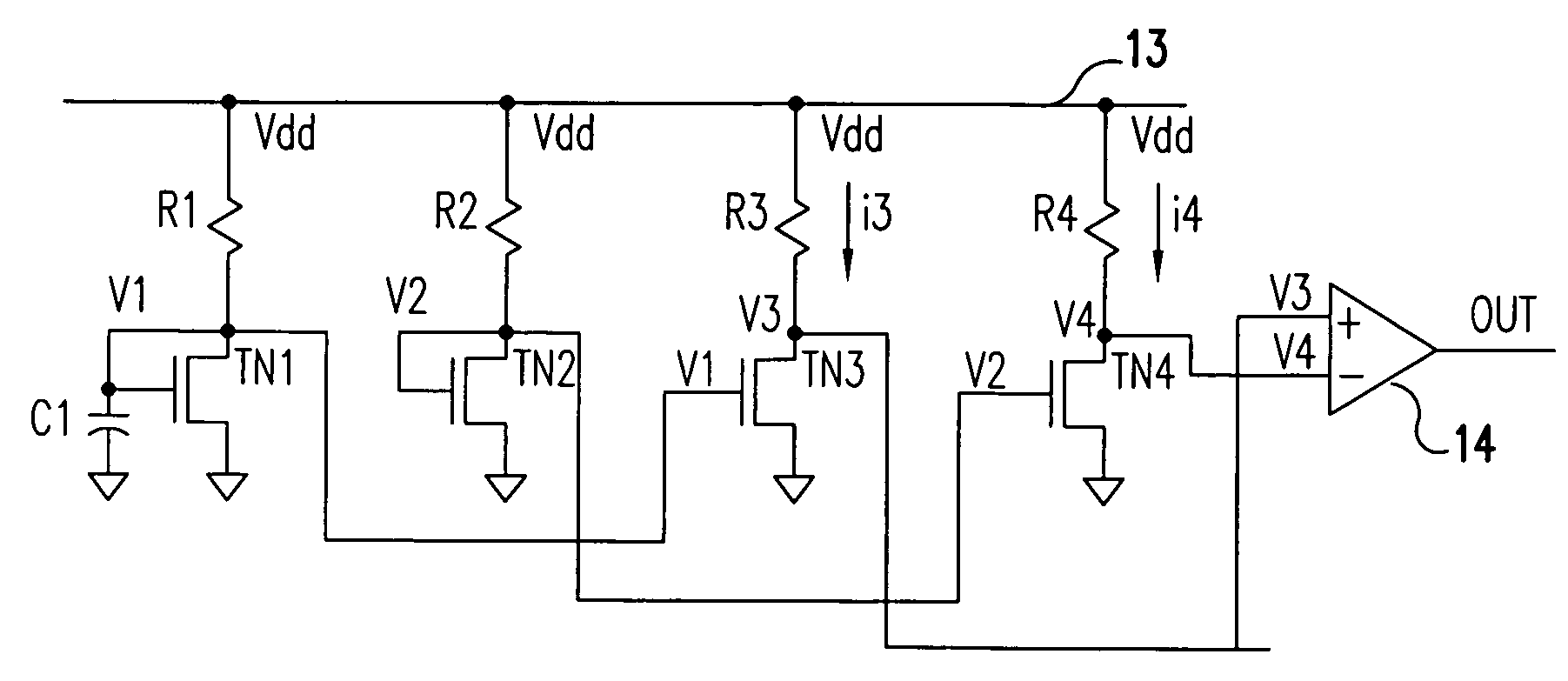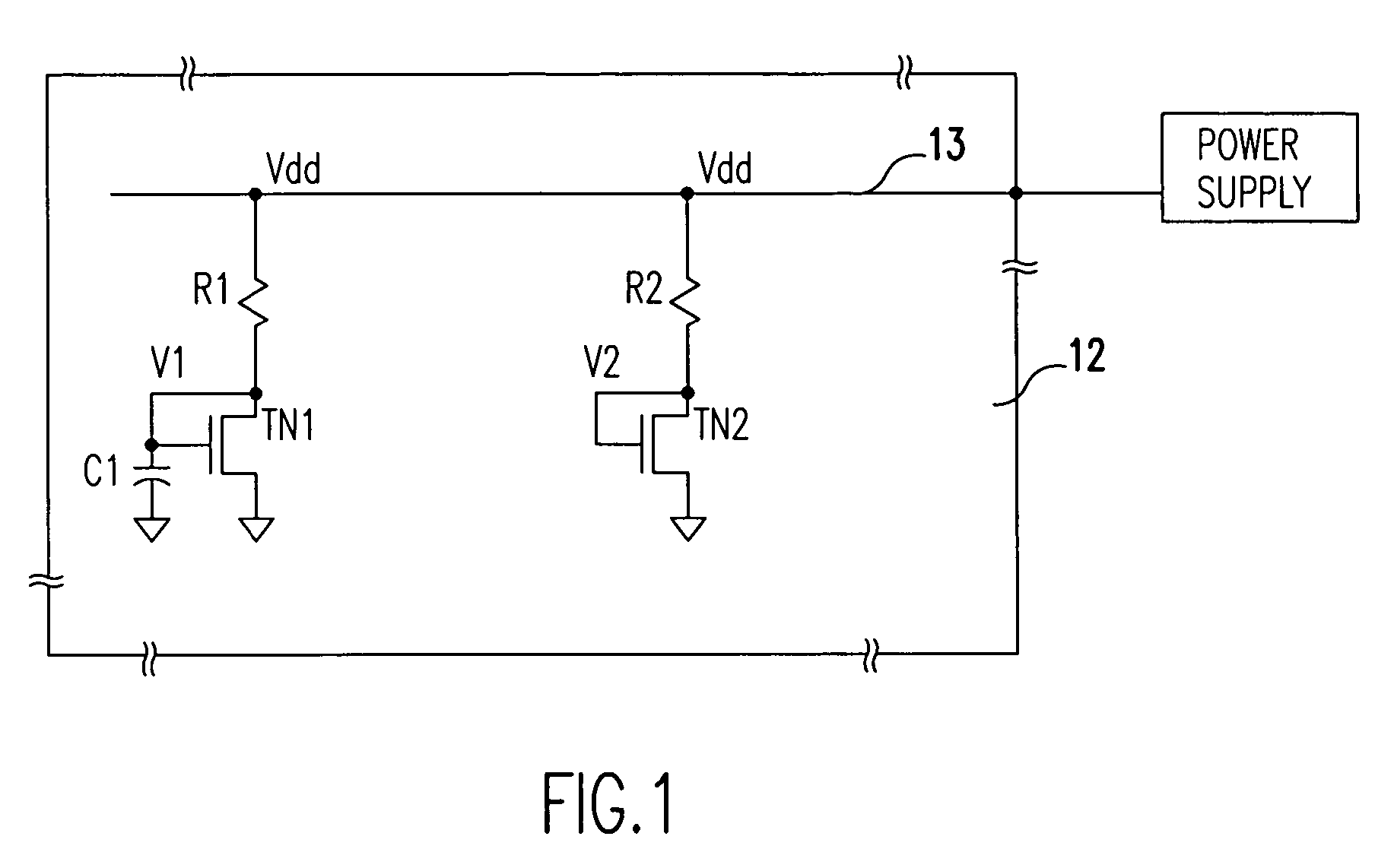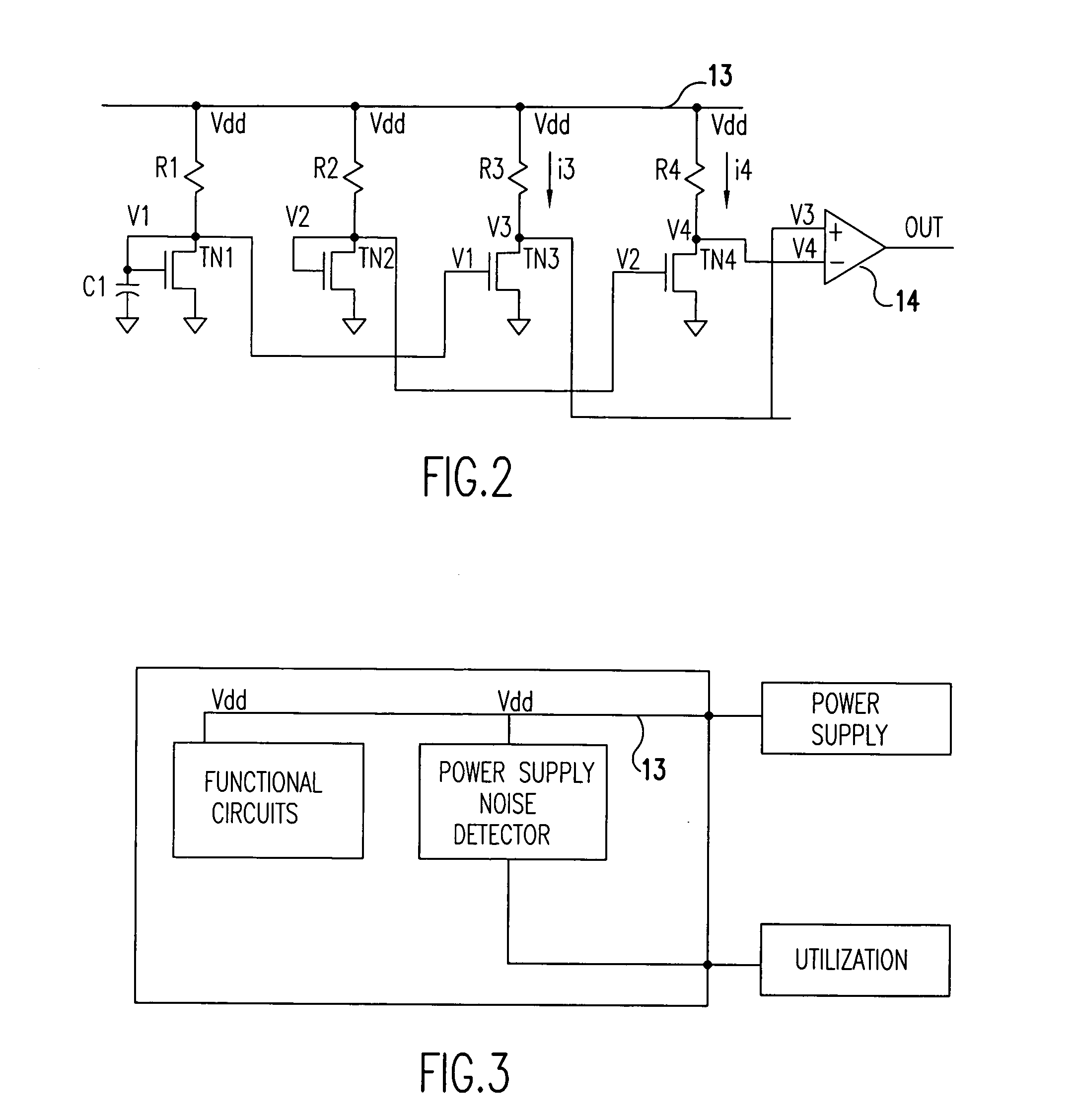On-chip high frequency power supply noise sensor
a high-frequency power supply and noise sensor technology, applied in the direction of noise figure or signal-to-noise ratio measurement, instruments, measurement devices, etc., can solve problems such as chip damage, chip function error, and chip damag
- Summary
- Abstract
- Description
- Claims
- Application Information
AI Technical Summary
Benefits of technology
Problems solved by technology
Method used
Image
Examples
Embodiment Construction
[0014]Referring now to FIG. 1 of the drawings, a pair of CMOS FETs TN1 and TN2 and their associated circuitry is formed on chip 12, preferably in the same process as used to form the functional components on the chip. The transistors TN1 and TN2 are connected each as a simple current generator, with resistors R1 and R2 connected to voltage Vdd on the chip's internal power supply bus 13. The value of TN1 and TN2 and the resistance of R1 and R2 are the same. The drain of each transistor TN1 and TN2 is connected to its gate so that the current in each is largely dependent on the power supply voltage Vdd. A capacitor C1 couples the gate of TN1 to common, with the capacitor C1 acting as a low pass filter where the resistance of the filter time constant is given by the inverse transconductance of transistor TN1 in parallel with the resistor R1. The current through TN2 will track changes in the power supply voltage Vdd introduced via bus 13 substantially instantaneously while the current t...
PUM
 Login to View More
Login to View More Abstract
Description
Claims
Application Information
 Login to View More
Login to View More - R&D
- Intellectual Property
- Life Sciences
- Materials
- Tech Scout
- Unparalleled Data Quality
- Higher Quality Content
- 60% Fewer Hallucinations
Browse by: Latest US Patents, China's latest patents, Technical Efficacy Thesaurus, Application Domain, Technology Topic, Popular Technical Reports.
© 2025 PatSnap. All rights reserved.Legal|Privacy policy|Modern Slavery Act Transparency Statement|Sitemap|About US| Contact US: help@patsnap.com



